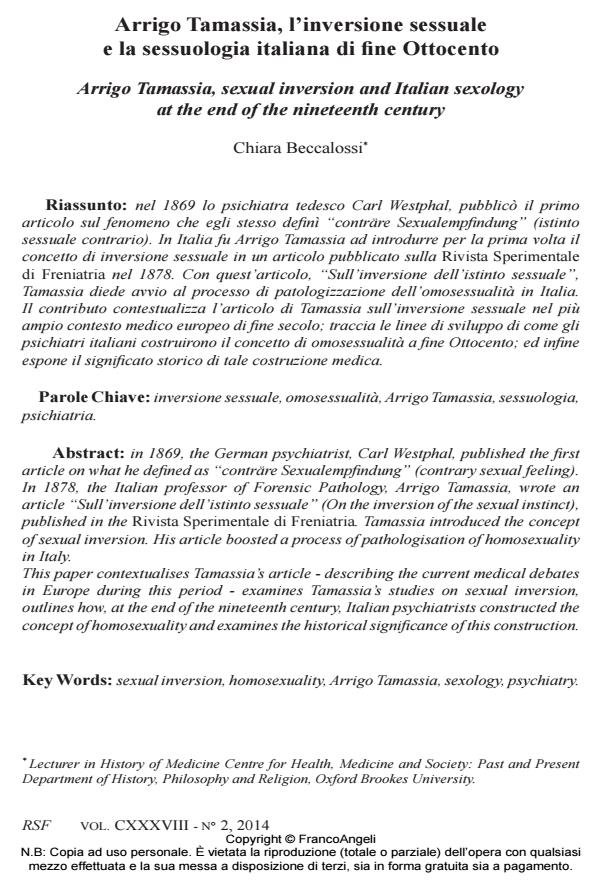Arrigo Tamassia, sexual inversion and Italian sexology at the end of the nineteenth century
Journal title RIVISTA SPERIMENTALE DI FRENIATRIA
Author/s Chiara Beccalossi
Publishing Year 2014 Issue 2014/2
Language Italian Pages 15 P. 27-41 File size 1604 KB
DOI 10.3280/RSF2014-002004
DOI is like a bar code for intellectual property: to have more infomation
click here
Below, you can see the article first page
If you want to buy this article in PDF format, you can do it, following the instructions to buy download credits

FrancoAngeli is member of Publishers International Linking Association, Inc (PILA), a not-for-profit association which run the CrossRef service enabling links to and from online scholarly content.
In 1869, the German psychiatrist, Carl Westphal, published the first article on what he defined as "contrare Sexualempfindung" (contrary sexual feeling). In 1878, the Italian professor of Forensic Pathology, Arrigo Tamassia, wrote an article "Sull’inversione dell’istinto sessuale" (On the inversion of the sexual instinct), published in the Rivista Sperimentale di Freniatria. Tamassia introduced the concept of sexual inversion. His article boosted a process of pathologisation of homosexuality in Italy. This paper contextualises Tamassia’s article - describing the current medical debates in Europe during this period - examines Tamassia’s studies on sexual inversion, outlines how, at the end of the nineteenth century, Italian psychiatrists constructed the concept of homosexuality and examines the historical significance of this construction.
Keywords: Sexual inversion, homosexuality, Arrigo Tamassia, sexology, psychiatry
Chiara Beccalossi, Arrigo Tamassia, l’inversione sessuale e la sessuologia italiana di fine Ottocento in "RIVISTA SPERIMENTALE DI FRENIATRIA" 2/2014, pp 27-41, DOI: 10.3280/RSF2014-002004